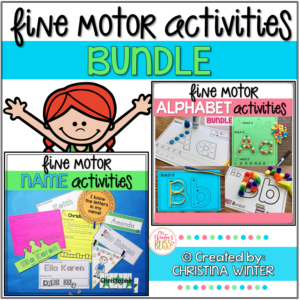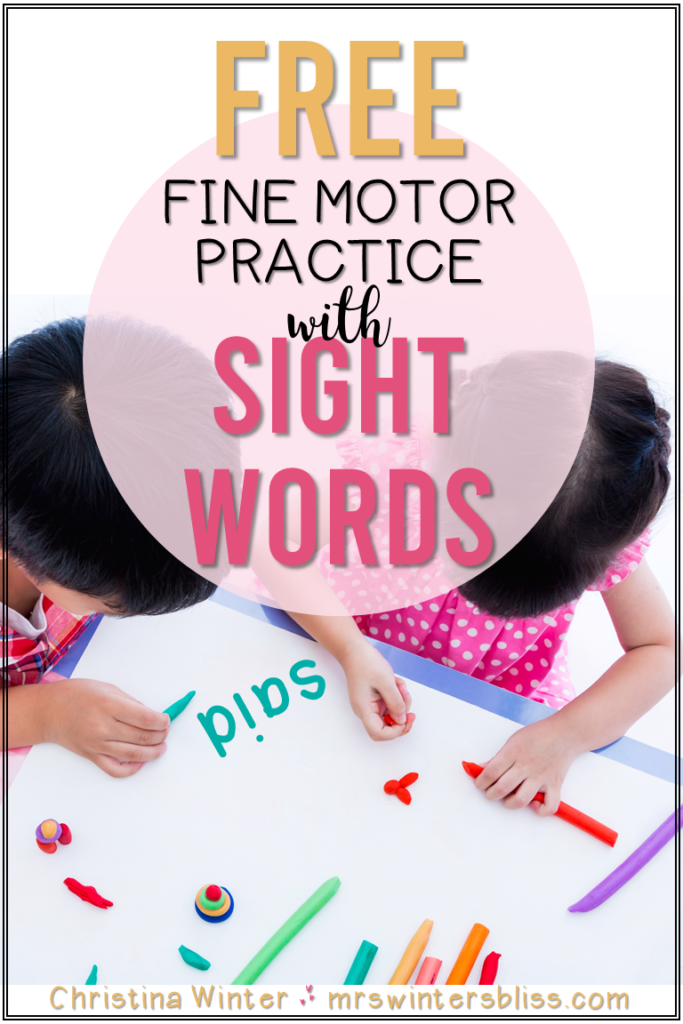
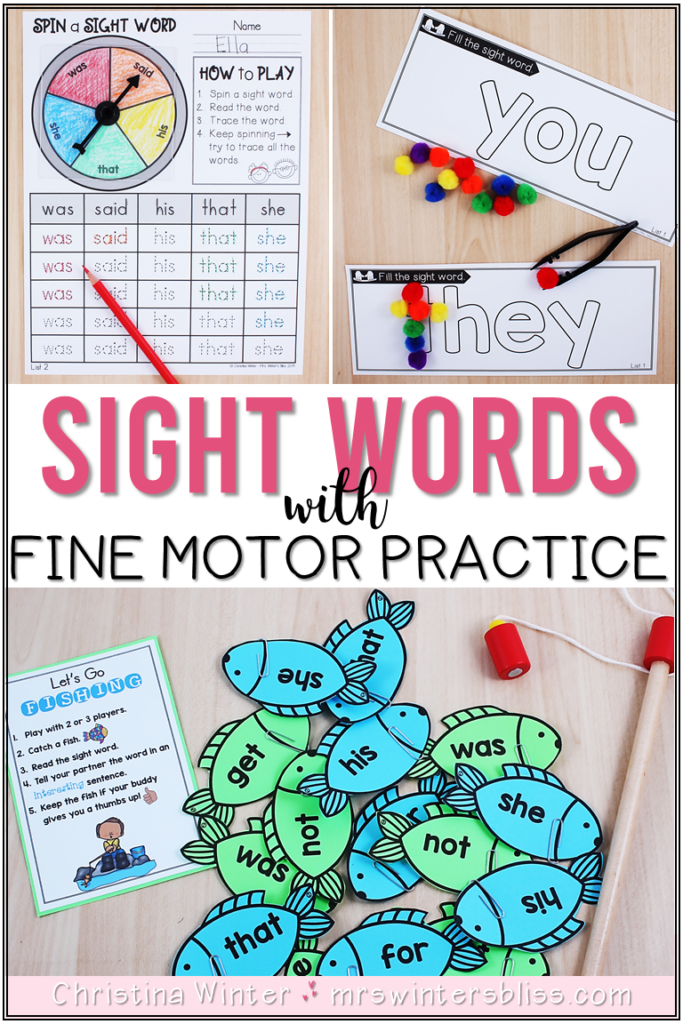
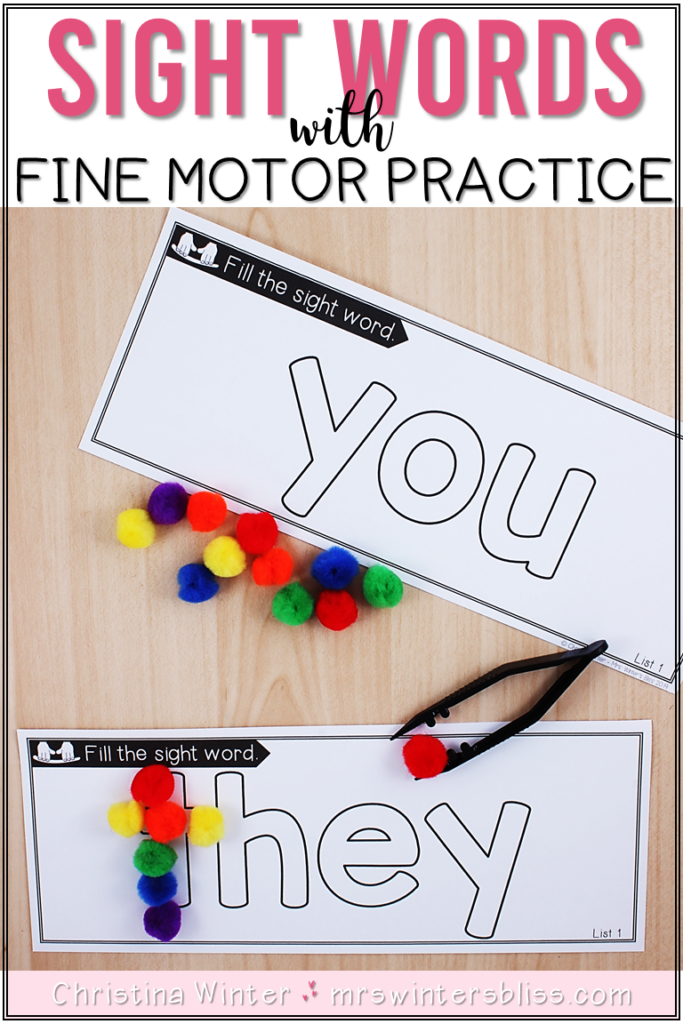
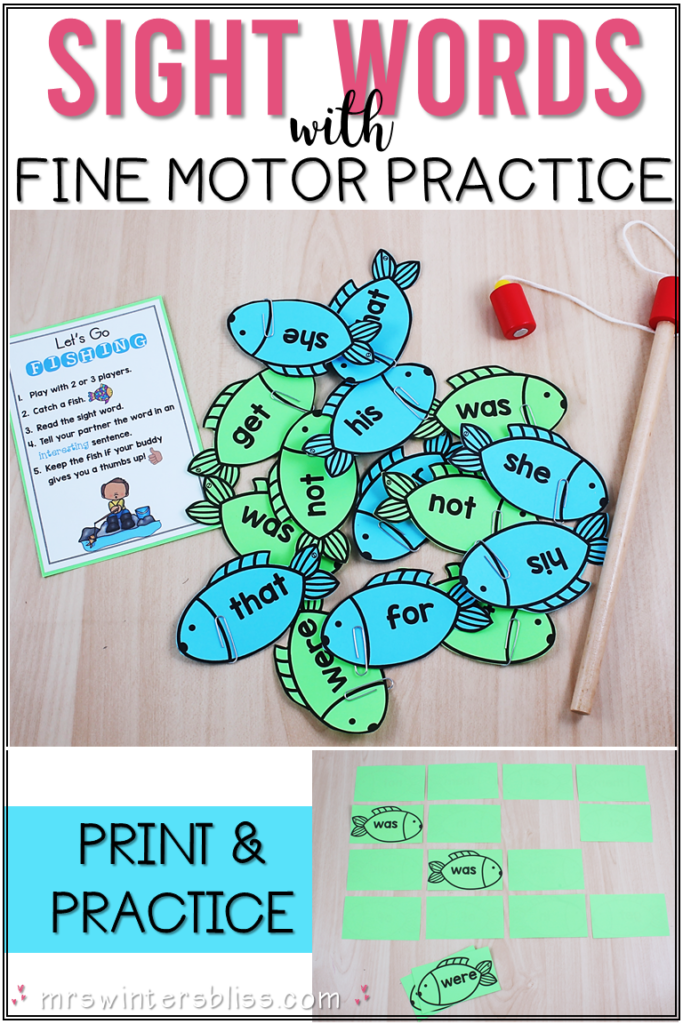
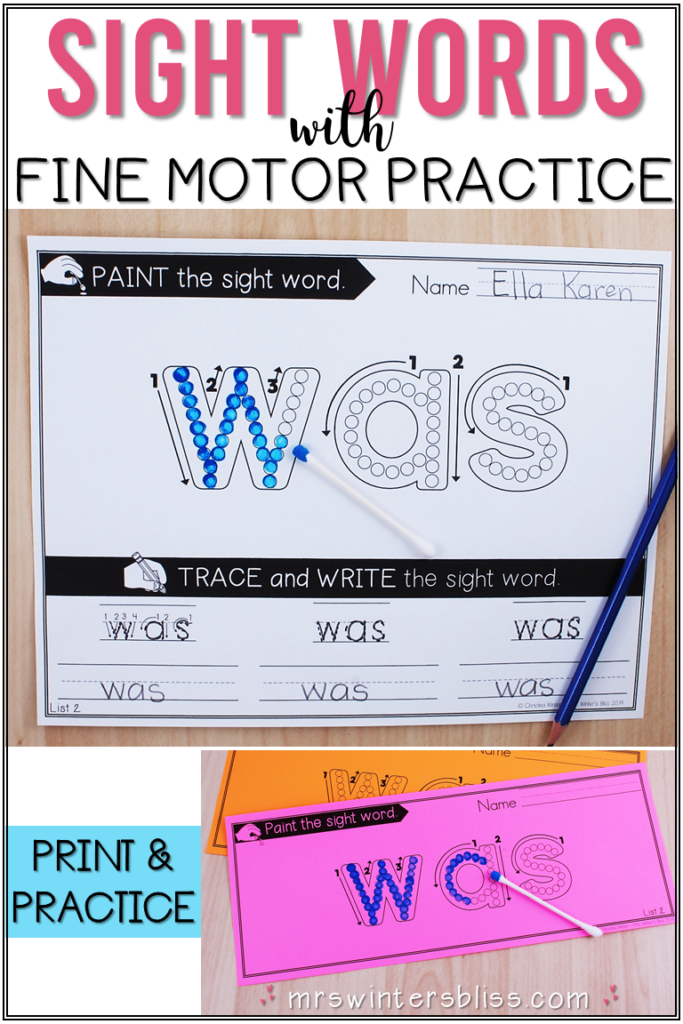
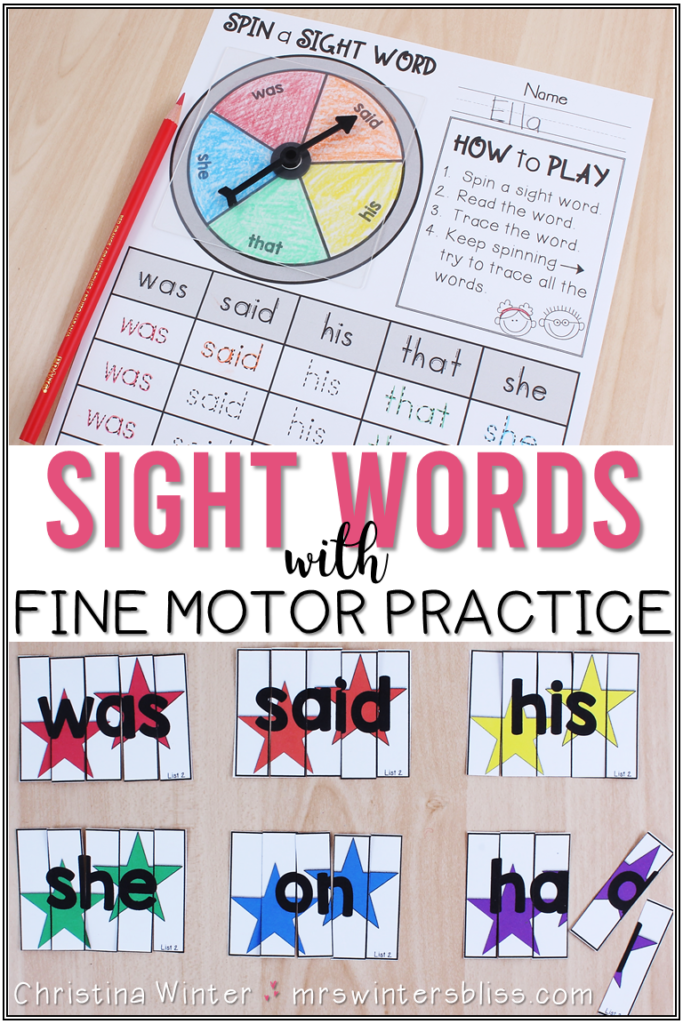
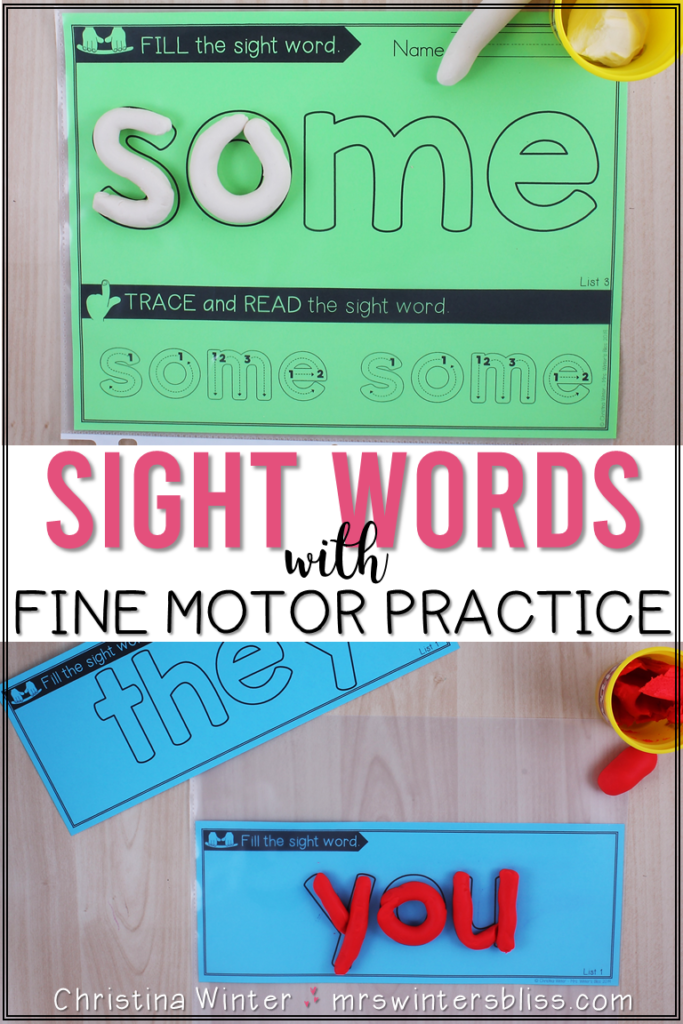
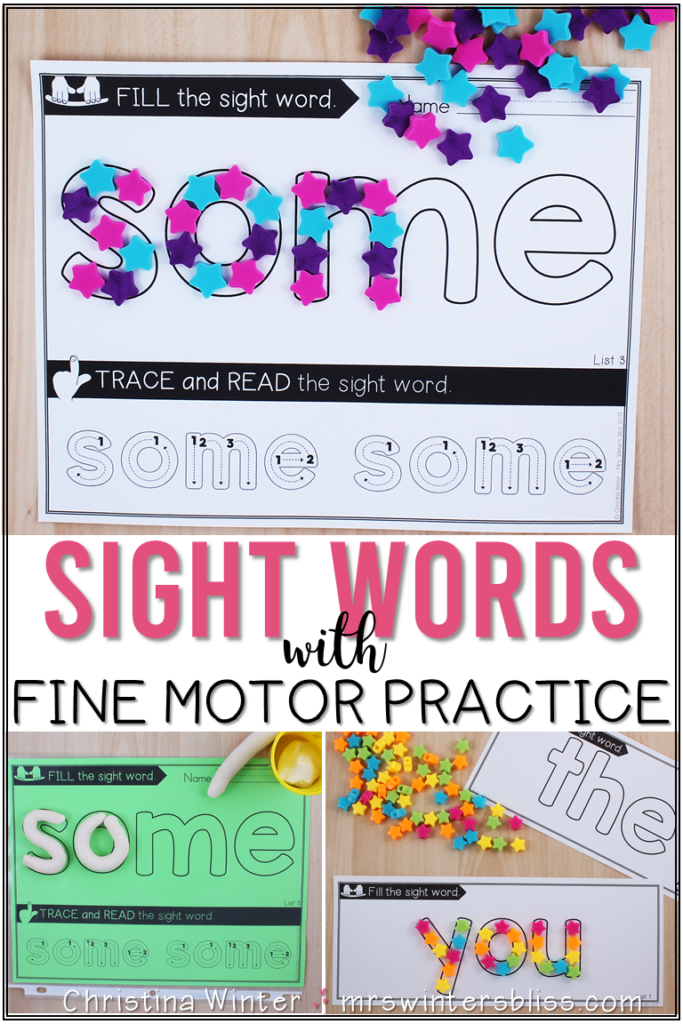
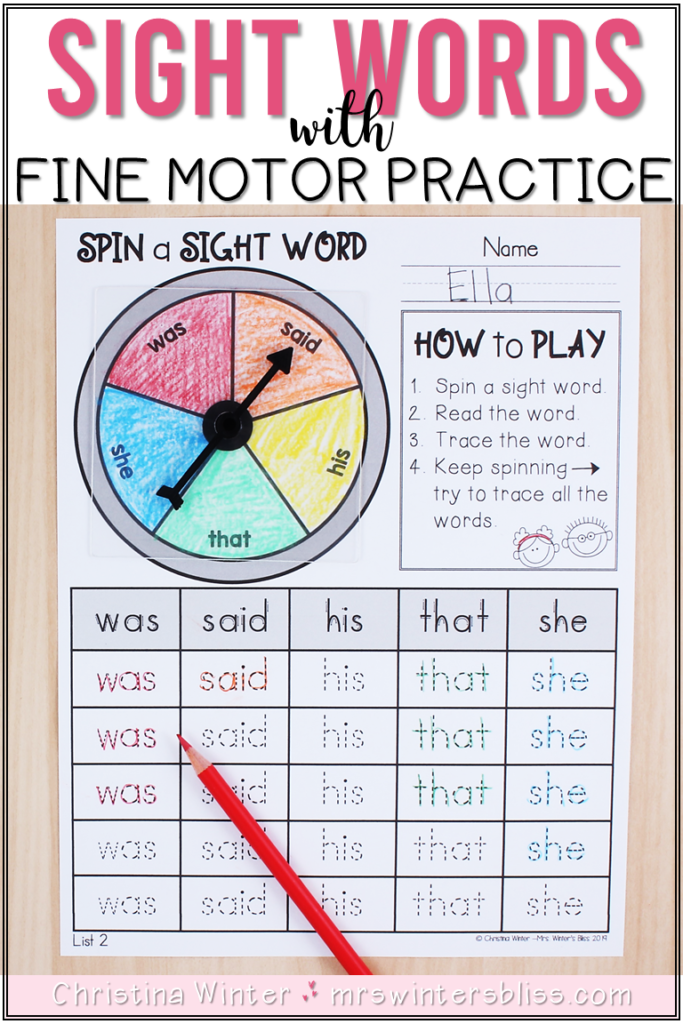
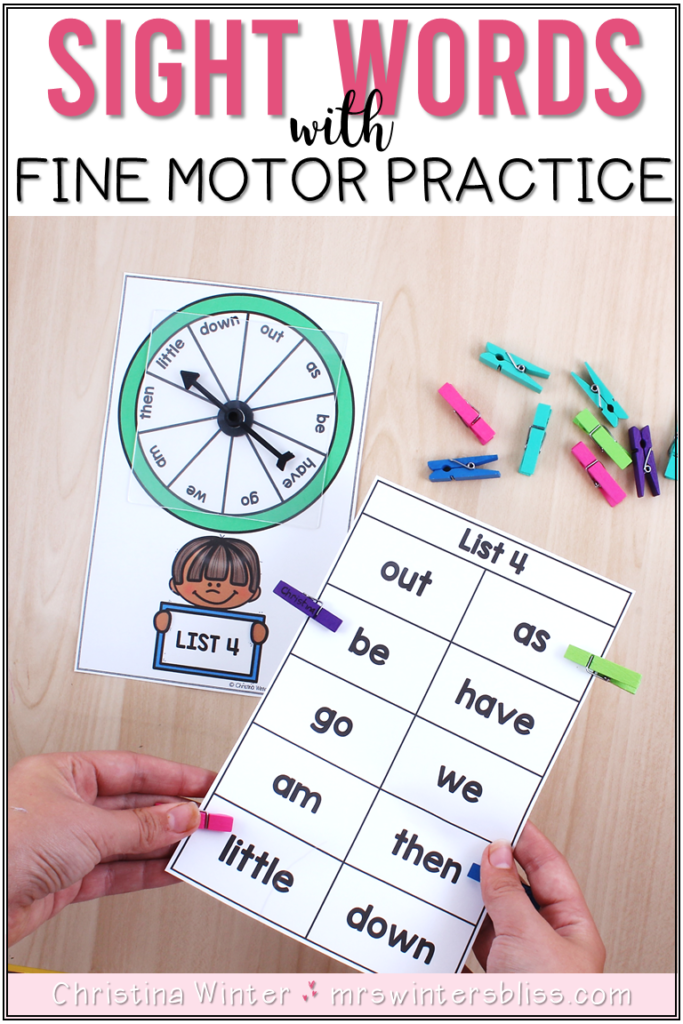
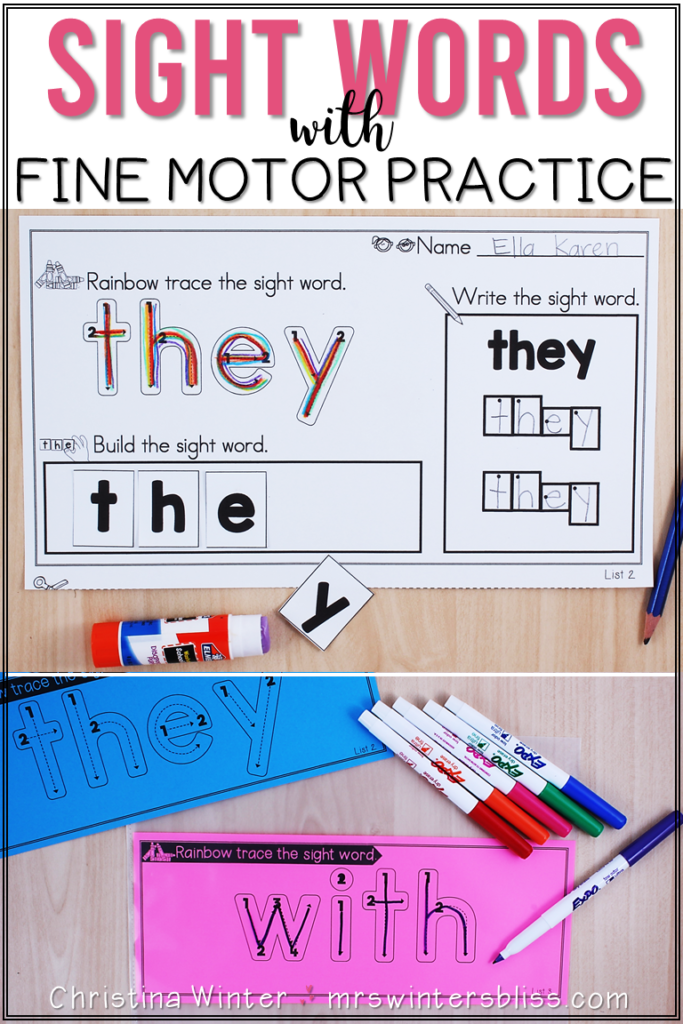
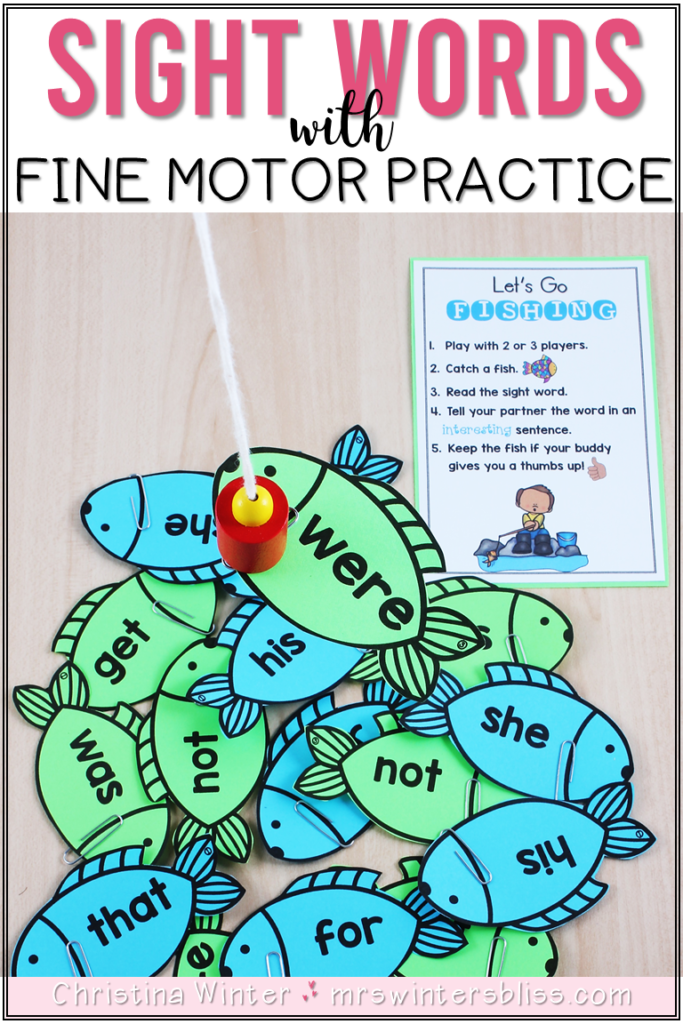
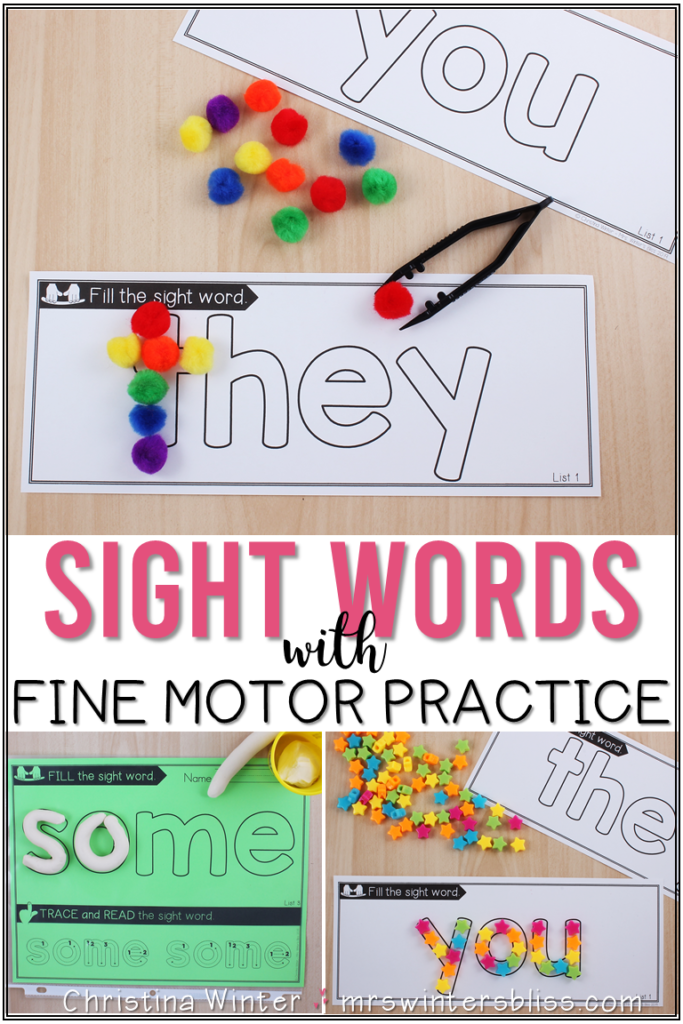
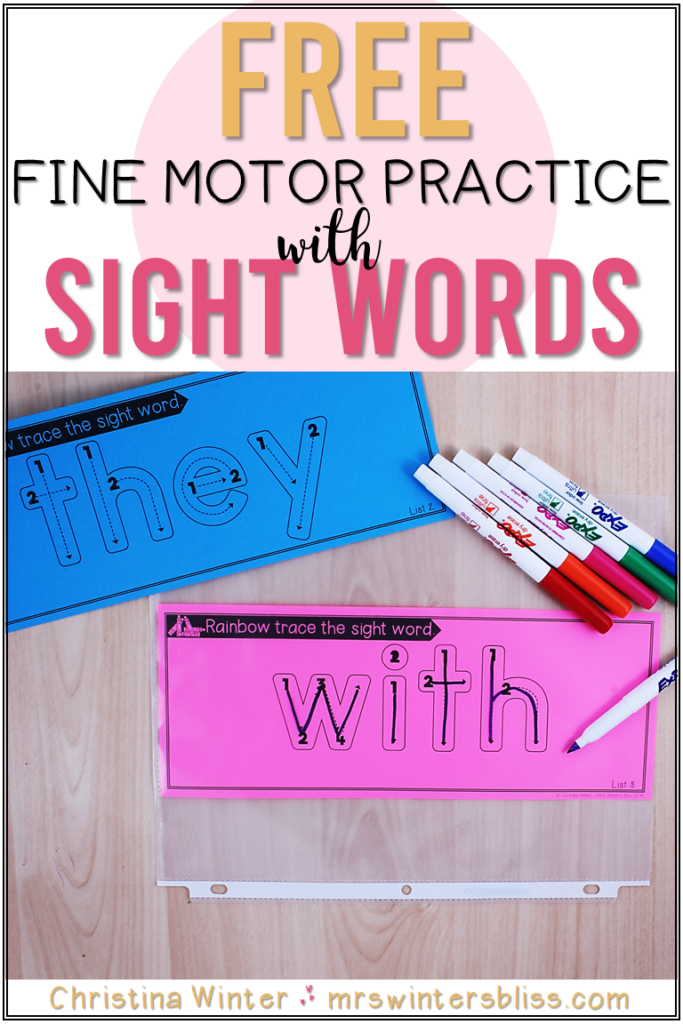
In this post, I share details about my High-Frequency Heart Word Fine motor activities. These activities offer Kindergarten, first and second grade students a hands-on way to learn sight words while developing their fine motor skills.
As adults, we likely don’t think twice about doing things like brushing our teeth, zipping a jacket, holding utensils or gripping a pencil, but surely in your classroom you have students who struggle with such tasks. That’s because these are all things that require well-developed fine motor skills.
Fine motor skills are those that involve a refined use of the small muscles that control the hand, fingers, thumb and wrist, and they are essential for success in the classroom.
Students who don’t have strong fine motor development may become more easily frustrated while doing tasks that require writing which can lead to poor self-esteem, anxiety and stress. Their academic performance may be compromised and their play options limited. – UGH!
Clearly, we should be helping our students to develop their fine motor skills, but where can we fit it into the already jam-packed day??
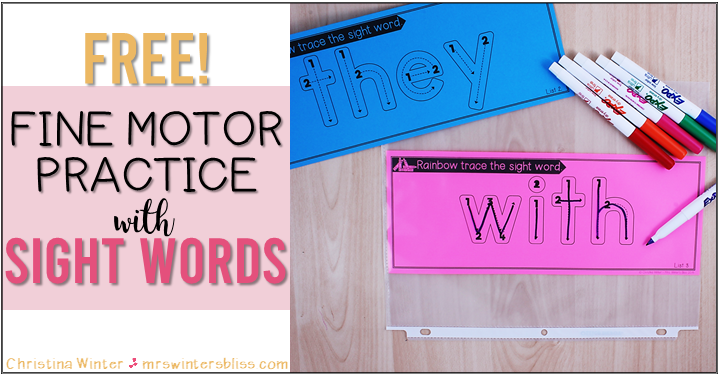
It is evident that our students need fine motor skill development, so I had to think about how I could combine fine motor development with learning tasks we’re already spending time on in the classroom. This is where the idea of Sight Word Practice with Fine Motor Activities came from. Typically all young learners are learning to recognize, read, and spell sight words and all need to develop fine motor skills, so it’s a perfect match!

This bundle of 6 resources has over 1200 pages of sight word practice married with fine motor skill activities!
It also includes my high-frequency word scope & sequence that aligns high-frequency words with recommended phonics skills for instruction. Words in this resource are grouped & organized to align with this research-based scope & sequence, so you can feel good knowing you are offering your students systematic practice.
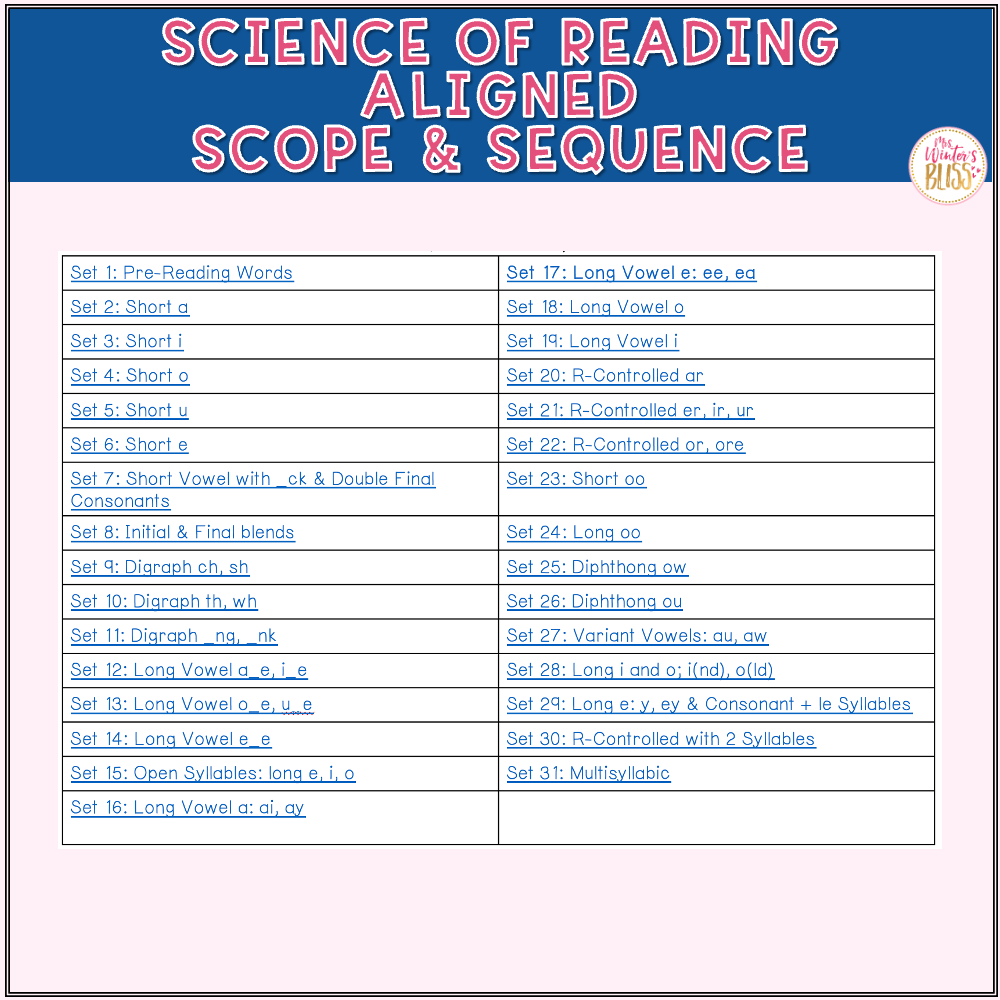
Finally, each activity offers a hands-on, engaging way for young learners to develop their fine motor skills and hand-eye coordination as they are work to read, write, and spell their sight words.
So let’s take a closer look at each of the SIX resources specifically designed to strengthen the small muscles in hands, wrists, and fingers that are included in the bundle…
FILL A SIGHT WORD
Students will develop fine motor skills as they fill each sight word with materials such as dough, beads, mini erasers, wax sticks, pom-poms, stickers etc.
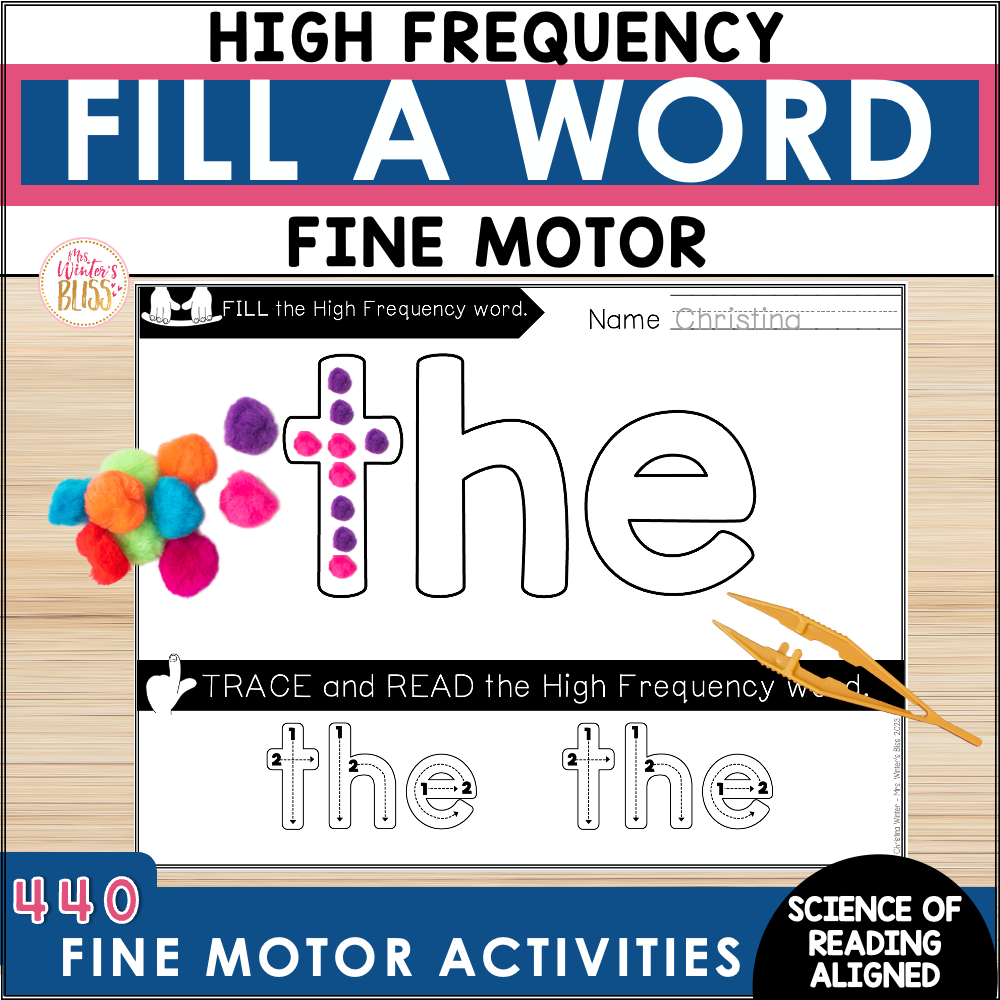
The direction arrows are designed to help emergent writers with proper letter formation as they trace the dotted letters of each sight word.
There are many options to make these resources valuable for your students. You can even print the full or half sheet words and then laminate (or place them in a plastic sleeve) so they can be reused by your students year after year!
TRACE, BUILD, AND WRITE A SIGHT WORD
The full page TRACE, BUILD, WRITE sight word worksheets give students the opportunity to rainbow trace, build, and then write the high frequency sight word.
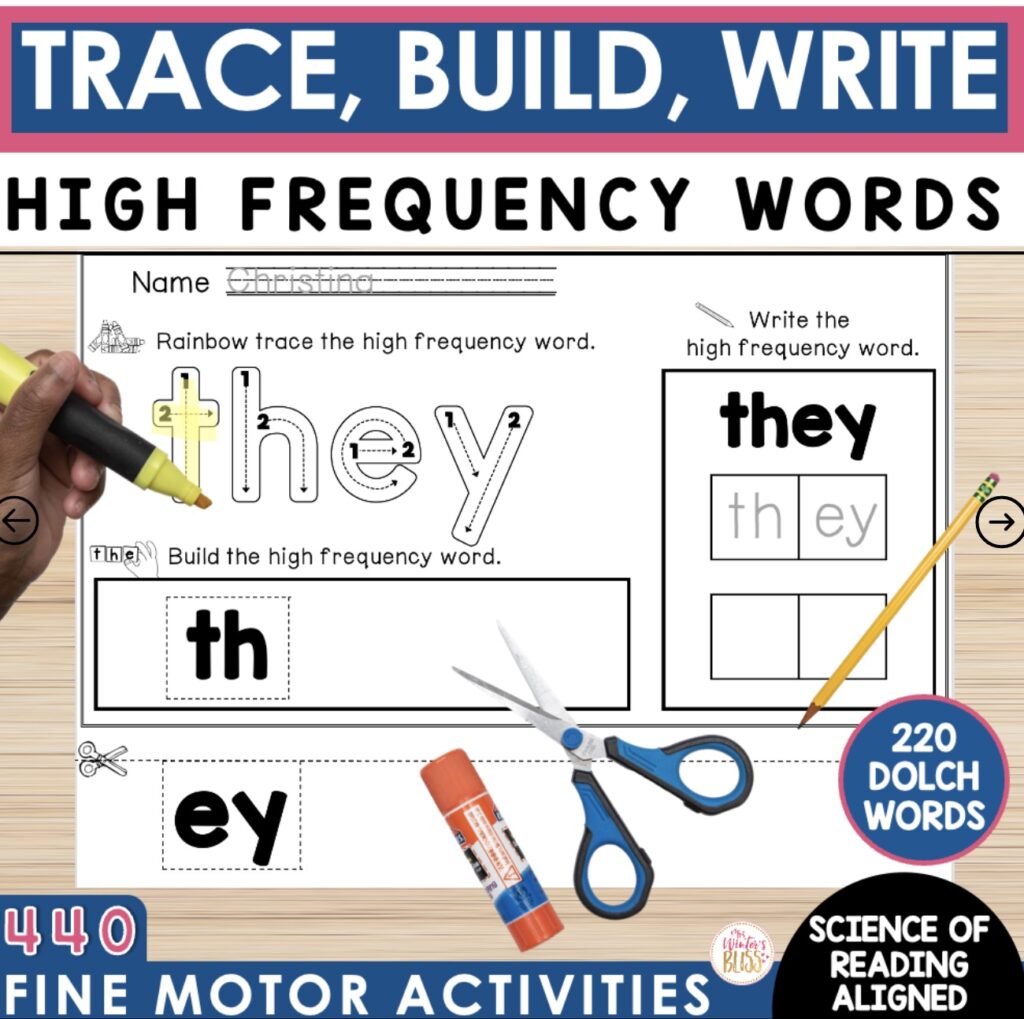
The half page worksheets require students to only rainbow trace the word.
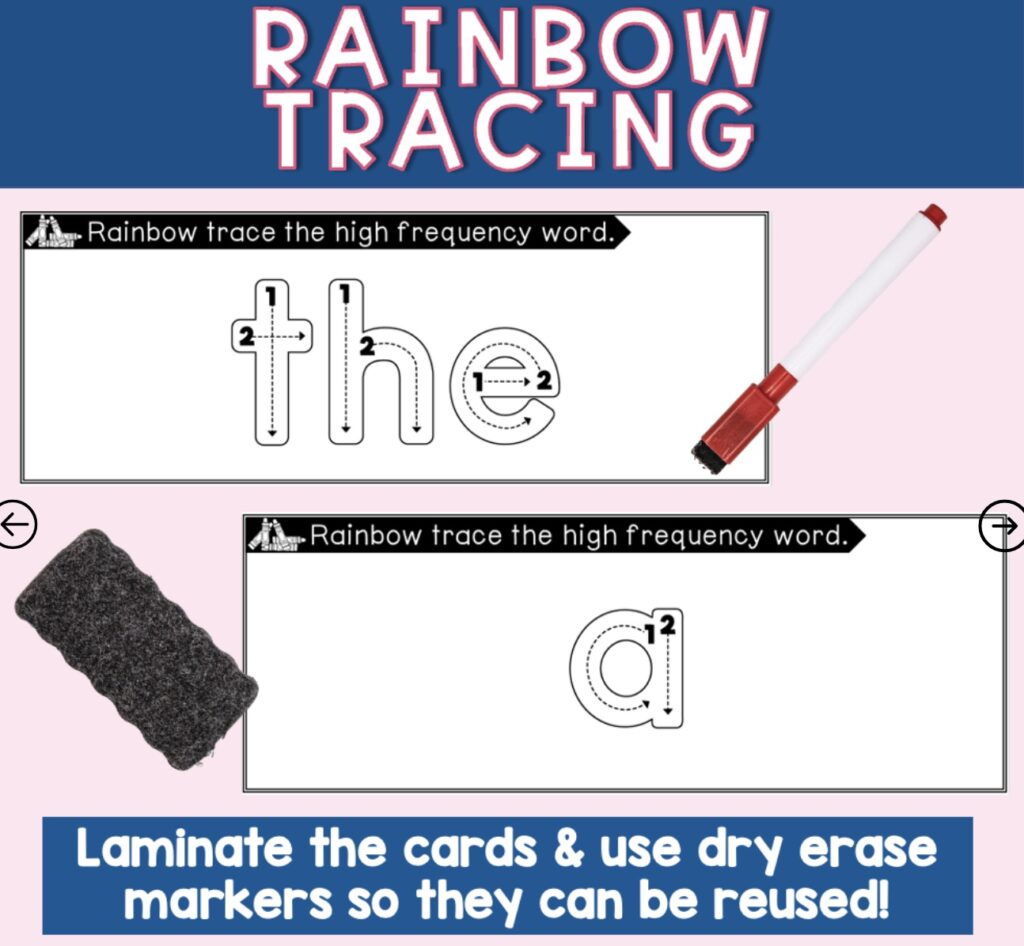
SPIN a SIGHT WORD
This resource includes two fine motor sight word games.
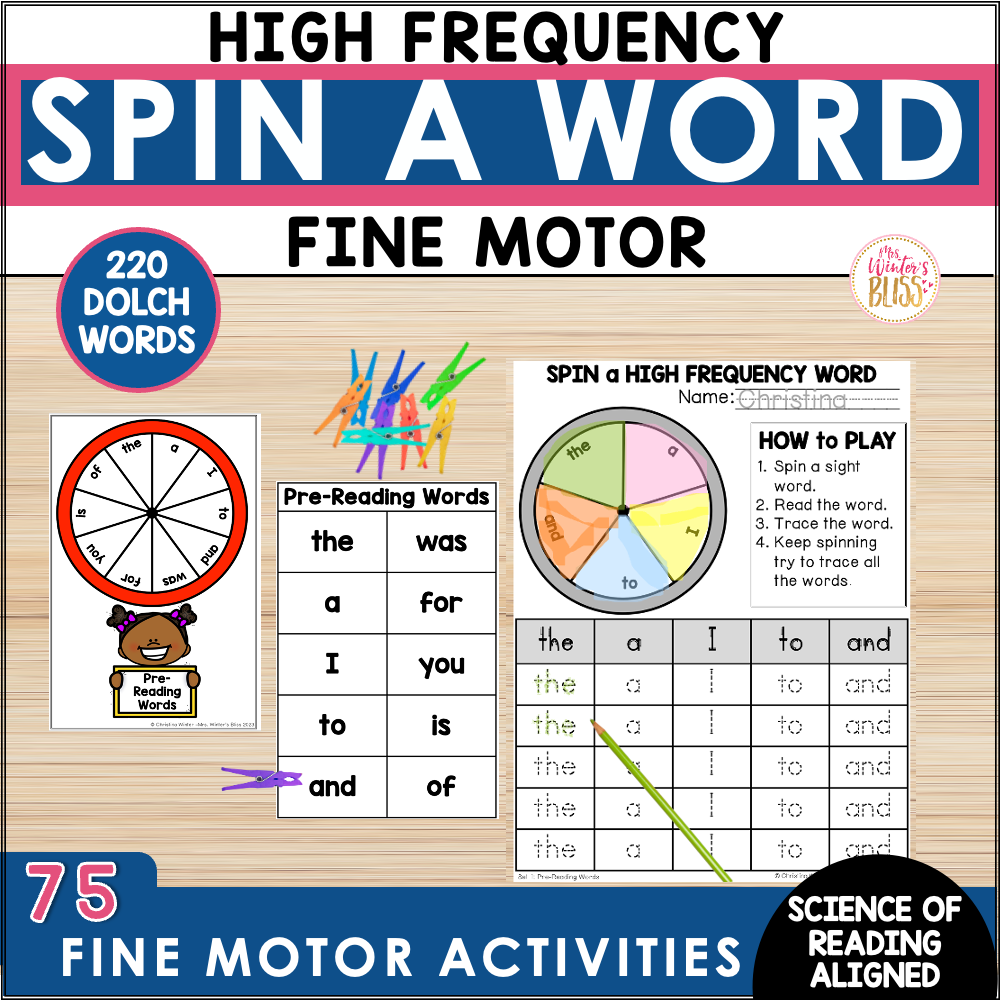
Spin and Clip Sight Words– In this game students spin, read the sight word and then clip it. The person who clips all their sight words first is the winner! If you don’t have clips, students can use beans or small counting chips to cover the words.
Spin and Trace the Sight Word– In this game students spin a word, read it, and then trace it. Students can trace directly on the paper or you can use a plastic sleeve and a vis a vis marker.
SIGHT WORD GAMES
This resource includes the sight word master list and direction cards for three different games!
Print the desired word cards to play:
- Sight Word Fishing (magnetic fishing pole link)
- Sight Word Memory
- Sight Word Go Fish

These sight word cards were designed with minimal prep in mind! Just print 2 sets of cards on colored paper for an instant sight word Memory or Go Fish game. It’s easy pick and choose the sets of words you want students to practice from the organized lists.
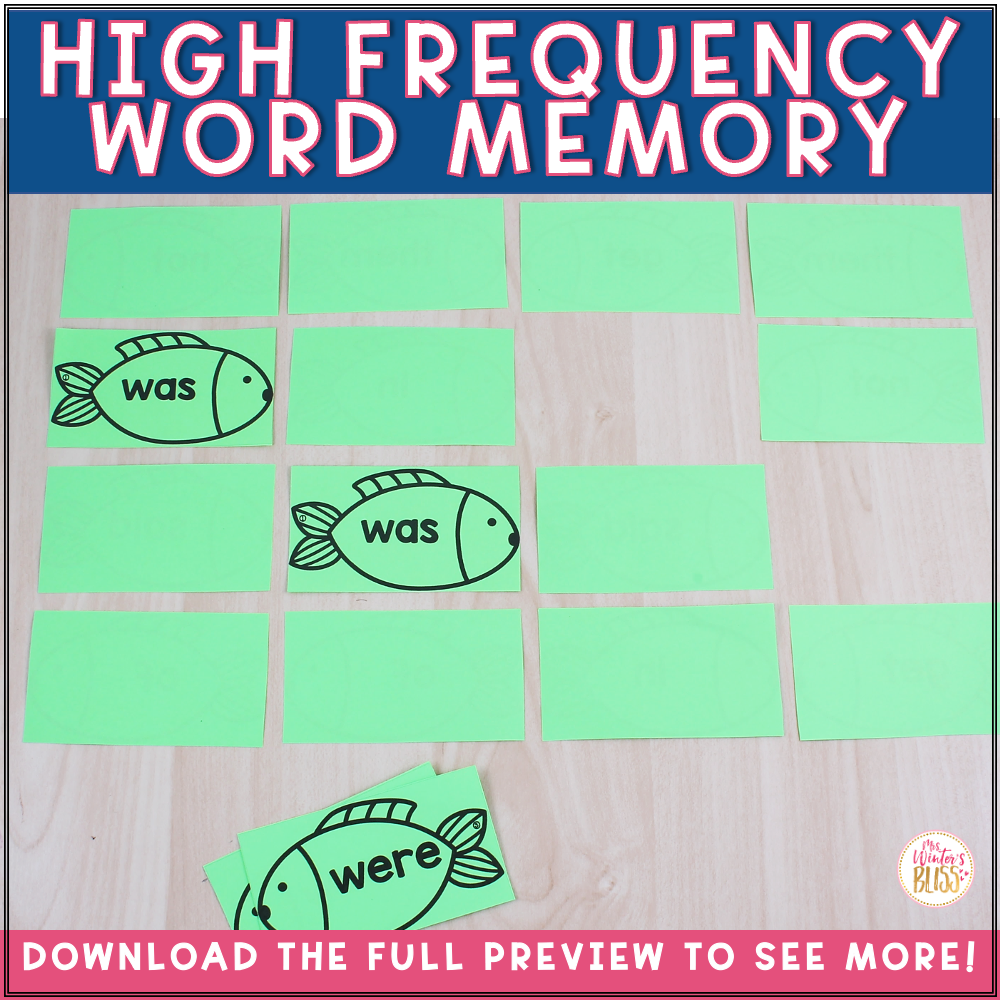
They are the perfect activity for centers, morning work or even indoor recess!
PAINT A SIGHT WORD
Students can strengthen the small muscles in their fingers and palm of the hand by using Q-tips to paint and fill the words. If paint seems too messy they can use a thick markers to dot each word.
Included are two options for each sight word:
The full page worksheet has students paint and trace each sight word.
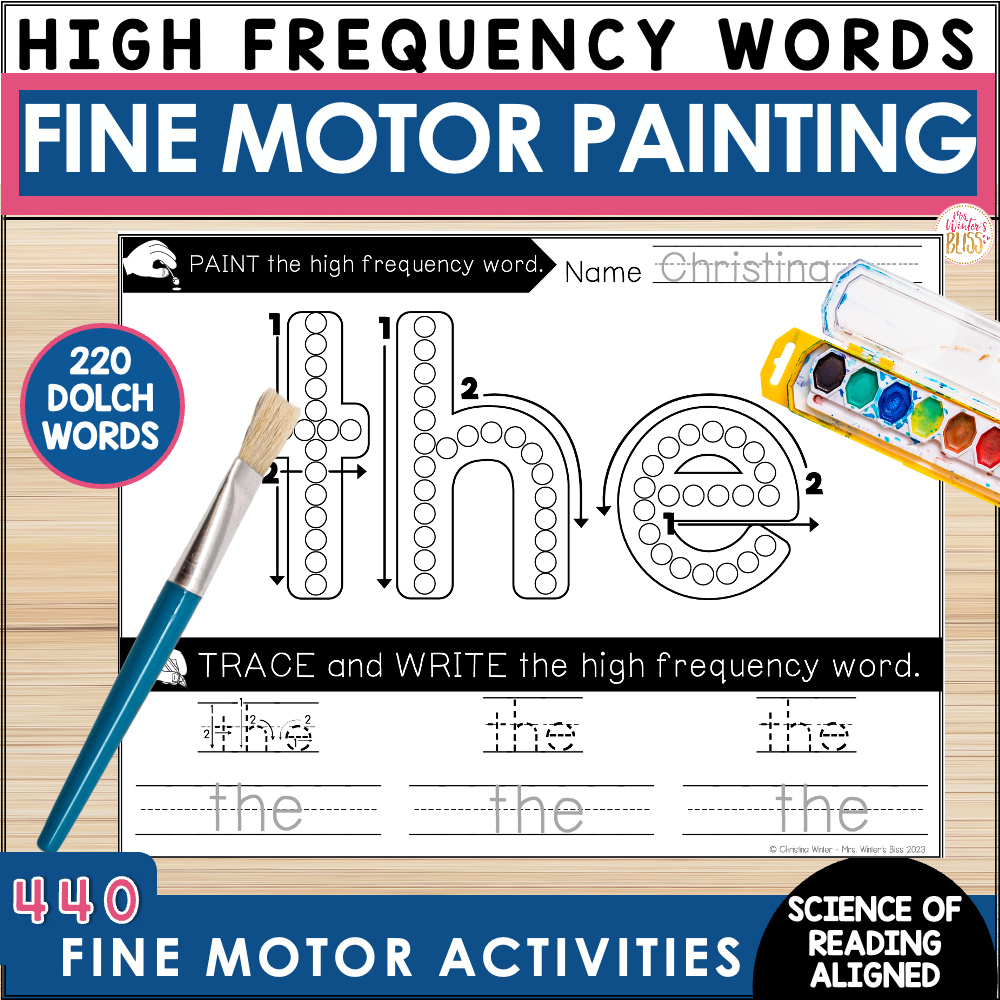
The half page worksheet has students just paint the sight word. Send them home or students can make a sight word book with these printables!
SIGHT WORD PUZZLES
All you have to do to prep this activity is print and cut the desired sight word list. Each list contains 10 sight words. Students must spell the sight word correctly in order to complete the puzzle!
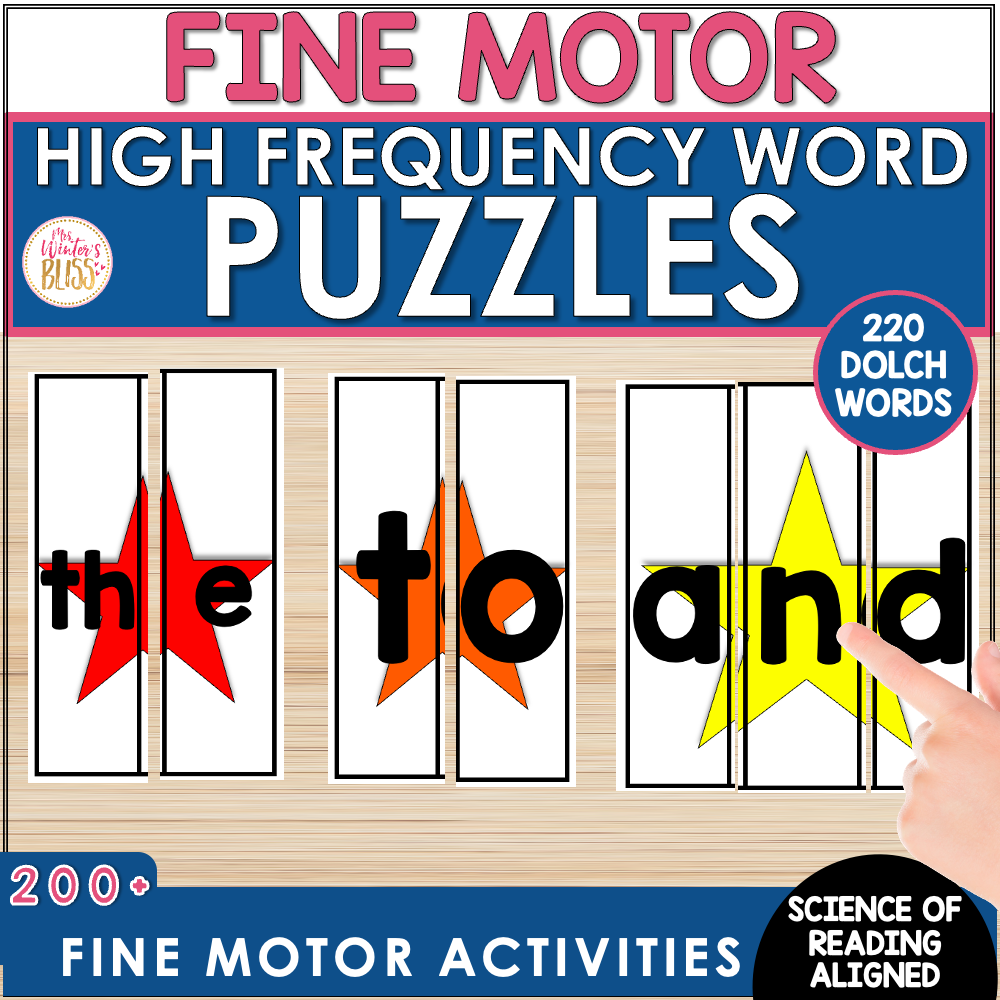
I hope all the resources I’ve shared today will help you bring more fine motor practice into your school day. When we can incorporate fine motor development into the learning that is already taking place, we are working smarter and making activities more engaging and meaningful for our students!
Looking for more fine motor activitie? In this post I shared my FINE MOTOR NAME ACTIVITIES, a resource that helps young learners develop fine motor skills while they work to recognize, learn to spell, and write their names! And here where I share my FINE MOTOR ALPHABET ACTIVITIES, a bundle of letter tracing activities that help students develop fine motor skills and hand-eye coordination while they work on proper alphabet letter formation.
-shop this post-
-
Sale Product on sale
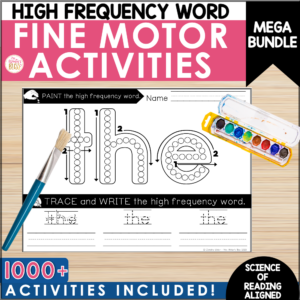 High Frequency Heart Word Fine Motor Activities BUNDLEEarn 0 Reward Points
High Frequency Heart Word Fine Motor Activities BUNDLEEarn 0 Reward Points$23.50Original price was: $23.50.$18.80Current price is: $18.80.












